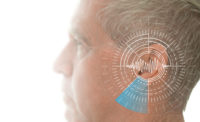This year’s AIHce is significant in that it marks 80 years since the first conference was held in Cleveland, Ohio. It’s hard to imagine what the forefathers of the industrial hygiene profession would have made of the measurement technology available today. It’s even harder to predict what the technological future holds for the next 80 years, but the trajectory is certainly based around the smartphone as a hub for voice and data plus a plethora of miniaturized sensors backed by “big data” analytics. That vision is perhaps closer to reality, even in hazardous atmospheres, now that intrinsically safe smartphones are more readily available.
Sensor fusion and further advances in wearable technology are the key to measuring multiple physical and chemical agents which is the underlying promise of the industrial internet of things (IIoT). According to LNS Research’s blog by Peter Bussey in March 2019, the connected worker emerged as a key pillar of industrial transformation along with connected operations and connected assets which are all recognized as essential aspects of an Industry 4.0 “Factory of the Future” approach. The benefits of a “connected worker” are wide ranging:
- Personal monitoring.
- Ergonomics – prevention of musculoskeletal disorders.
- Human factors – real-time fatigue detection.
- Personal safety – real-time man-down detection; lone worker controls.
- Intervention.
- Lone working – controls/personal tracking for improved safety; man-down rescue.
- Collision avoidance – workers on foot and equipment.
- Prevention.
- Geofencing – access control to hazardous areas; warning of proximity/entry to hazardous areas.
- People/plant interface – access control to plant/equipment.
- Hazard mapping – personal interface to warn workers of localized hazards, e.g., noise, dusts, gas and vapours.
Wearable technology in the form of gas detection, noise dosimeters and personal air sampling pumps has actually been around for many decades, but the technology to measure noise has certainly come a long way in terms of functionality, ease of use and the ability to download comprehensive data sets which can then be analyzed in great detail by software. Experimenting with “what-if’” scenarios, taking out noise events and seeing the effect on exposure can really help with the recommendation of appropriate control measures.
For example, Casella’s dBadge2 noise dosimeter is equipped with audio capture, octave band analysis and Bluetooth™ that with an accompanying mobile phone app allows you to check the progress of a measurement without the need to disturb the worker. This is a small productivity win for the worker and industrial hygienist alike, and because this is an unattended measurement, there is also a motion detector to check that the worker has actually kept the instrument on and not left it next to the noisiest piece of equipment in the plant.
In fact, there is a growing range of health and safety monitoring products, including Casella’s Apex2 air sampling pump, which now has this kind of connectivity. In Casella’s case, the same Airwave app that controls its dBadge2 dosimeter also enables pump control with a fully automatic calibration. The latter serves to minimize user error requiring just a one-button press of the app and importantly, saves a lot of time. Being able to control and view multiple measurements from one app makes a busy plant turnaround, for example, that little bit less stressful when you are up against the clock.
There is also a convergence of other technologies, such as gas detection, man-down and communication, plus a growing use of smartphones (or tablets) as a platform for mobile forms and near miss reporting in near real time.
So, is real-time everything on a tablet a possibility? The market is still in an early phase of development, solutions are fragmented and it’s proving to be a hard sell in some instances, not least because of the ethical concerns. Customer feedback has also indicated that it’s hard to make a business case on health and safety alone, and any solution must provide the holy grail of improved productivity. Having a dashboard showing employee’s hazard exposures, location and vital signs backed by big data analytics may well bring health and safety issues and their impact on productivity into evidential focus. Actionable insights that correct or stop a problem before it even happens must have an obvious return on investment.
This year’s AIHce promises to showcase many new developments and product launches. Technology certainly holds the key to bringing about a much-needed change in the approach to many of the world’s occupational injuries and illnesses, which are largely avoidable through effective monitoring and control.
Tech giants, small startups and traditional health and safety vendors are busy developing connected products and demonstrating capability. Shape the future by providing your own thoughts via a short questionnaire: https://www.surveymonkey.co.uk/r/Wearable_Technology
For information on Casella, its products and its announcements at AIHce, visit Booth #1508 or www.casellasolutions.com.





